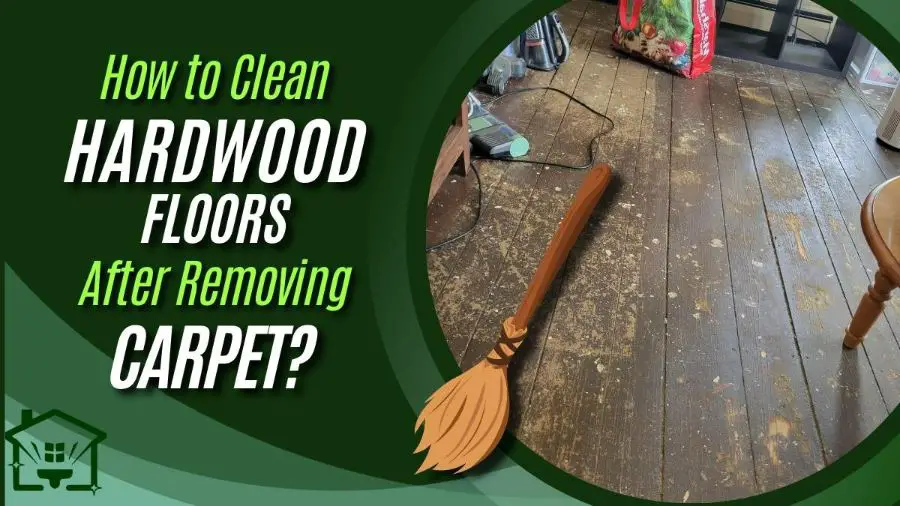Unclean hardwood floors get covered by dust and grime and become a breeding ground for allergens.
So, after removing the carpet, you must remove any glue and sand on the floor to clean your hardwood floors properly. Then, you can mop, vacuum, seal, and polish the floor.
Continue reading for a detailed step-by-step guide to getting your unclean hardwood floors vibrant again!
🧹How To Restore Hardwood Floors After Removing Carpet?
| Steps | Methods |
| Basic steps | 1. Remove any remaining carpet glue & debris 2. Check the finish of your floor 3. Vacuum & mop the floor |
| Sanding the floors | 1. Sand The Floors 2. Stain The Floors 3. Sandless Refinishing |
| Cleaning the floors | 1. Vinegar solution 2. BonaWood bleach & water solution 3. Hot water & tide |
| Polishing the floor | Almond oil |
Note:
Before starting the steps, assess your floor’s condition. We recommend consulting a professional if your hardwood floor has major damage or scratches after removing the carpet.
Follow these methods to restore hardwood floors if the floor has minor damage:
🧼Basic Steps

Materials needed: Scraper, broom/sweeper, vacuum, mop, and water.
💡Tip: You can use a heat gun to soften the glue and make it easier to remove it.
⏳Sanding The Floors
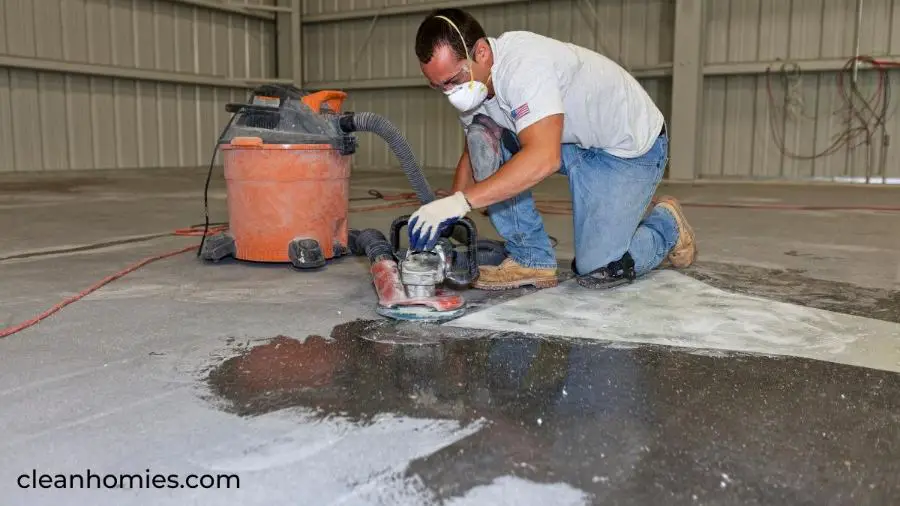
👉Sanding and Staining
Materials needed: Coarse and finer grit sandpapers, vacuum cleaner, wood stain, foam applicator, paper towels, or cotton cloth.
We’ve already cleaned and scrapped the glue to prepare it for sanding. Sanding will remove any remainder of stubborn carpet adhesive or other debris. You must also smoothen any imperfections like dents and scratches.
It’s very satisfying to see the surface look new after sanding. Thoroughly vacuum off all the dirt so we can start with the staining.
💡Tip: If a scrubber thoroughly removes stubborn dust and adhesive off your hardwood floor, you can skip sanding the floor and apply a sealant.
✍️Note: For the staining of the floor, have proper ventilation to avoid inhaling the fumes.
Also Read: Can You Vacuum Sawdust?
👉Sandless Refinishing
Materials required: Sealant, vacuum, mop, water, machine for sandless refinishing, and its technician.
Sandless refinishing is an alternative to sanding the floor where you do not have to deal with fine dust. But this method should only be used for very lightly damaged wood floors.
Note:
The process is similar to sanding and staining. It’s just that the fine dust and debris get dissolved in a chemical for convenience. But sanding is a more dependable method if your floor has minor damage.
Also Read: How To Clean Unfinished Hardwood Floors
🪠Cleaning The Floors
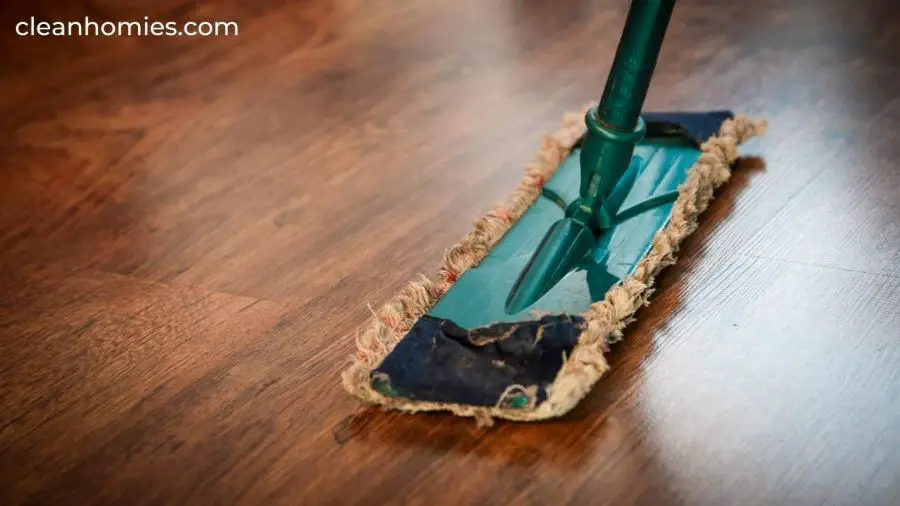
After applying the sealant, you must let it dry for a few days, depending on the type of sealant you use.
Once that’s done, it’s time to clean the floor.
Note:
Vinegar solution is great for hardwood cleaning, while wood bleach solution or Bona can also work well on stains. However, if wood bleach is not used properly, it can lead to discoloration.
Also Read: Best Way to Clean COREtec Flooring
✨Polishing The Floors
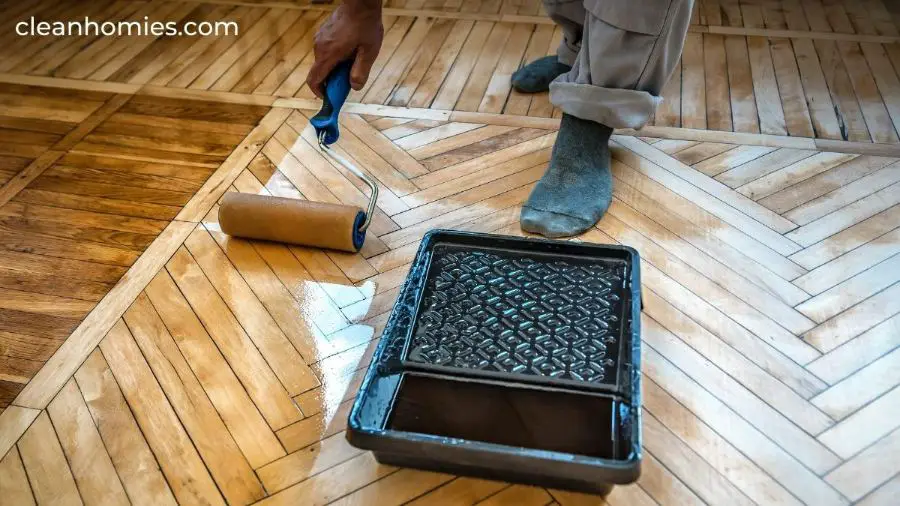
The hardwood floor will look dull after cleaning, repairing and applying a protective coating. For this, you have to apply a polish. Do polishing after the sealant is dry.
You can use almond oil to polish your floors. Other polishes are also available, but almond oil provides a natural color to the wood.
Before you apply polish on the entire floor, test it on a small, unnoticeable area.
Once it is dry, you can go for an optional second coat. Give the polish a minimum of 1-2 days to dry for you to walk and place furniture.
Also Read: Can You Use Fabuloso On Wood Floors?
🪧How To Protect Your Hardwood Floor After Removing Carpet?
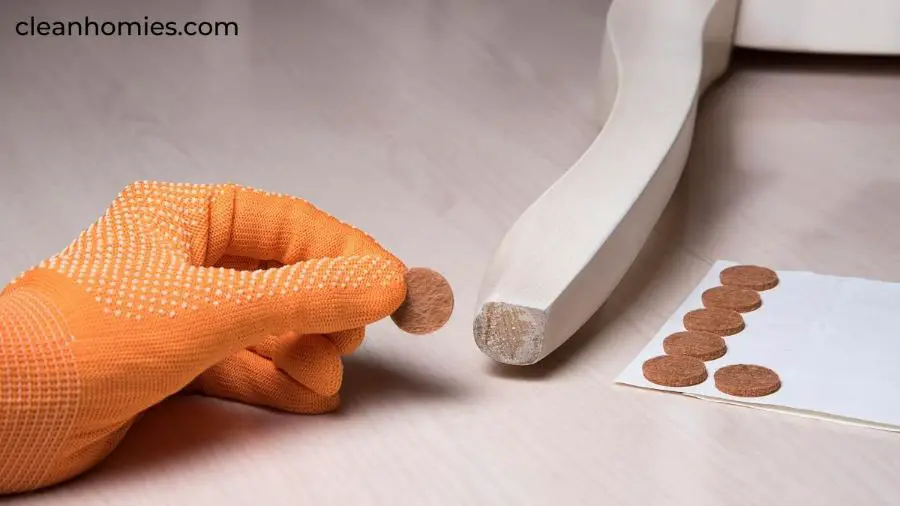
Hardwood floors are durable and elegant but can get damaged without proper care:
Also Read: Best Vacuum For Concrete Floors
💡How To Clean Hardwood Floors After Removing Carpet: FAQs
How to remove stains on hardwood under the carpet?
Vinegar solution removes dark stains from hardwood floors under the carpet. Dilute vinegar in water and use a rag to rub it off. Wood bleach can work on tough stains, but unlike vinegar, it could discolor the area.
How to remove carpet residue from hardwood floors?
Use vinegar and water solution to remove carpet residue. For this, sweep off dust and debris from the region and then apply this solution. After 5 minutes, wipe the region using a microfiber cloth. Use an old rag to absorb the remaining liquid and let it air dry.
How do you remove glue from hardwood floors?
If the glue is fresh, wipe it off with a cloth damped with water and dish soap.
For tacky glue:
1. Apply vinegar and water solution to the area using a cloth
2. Press and leave the cloth on that region for 5 minutes.
3. Then remove it, and the glue will be lifted.
4. Wipe away any remainder with a damp old cloth.
How to prep your wood floor after removing the carpet?
After removing the carpet from the floor, you will find nails on tack strips along the edges.
Wear leather gloves for protection and use a hammer and a flat pry bar to remove the strips.
Then remove the base molding. After that, you move on to restoring the hardwood floors of your home.
Finally, clean the floor and scrape the glue off the floor. Sanding and staining would be required to repair the minor damage. Polish the floor for a final touch.
How do you disinfect finished hardwood floors?
Using wood-friendly cleaners like Lysol to disinfect finished hardwood floors is best. You can also use highly diluted Hydrogen Peroxide or white vinegar solution.
But never use bleach and steam cleaners because they can seep into and damage the wood floors.
Sayan is passionate about effective cleaning techniques for hygienic and happy living. He loves to go down the rabbit hole to ensure that only practical advice reaches you. When he isn’t researching for Clean Homies, he reads Shakespeare or watches baseball!

